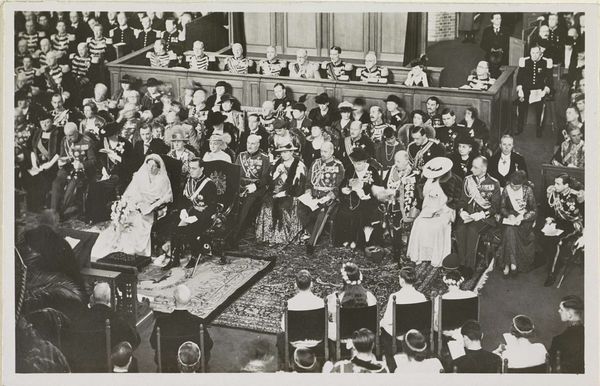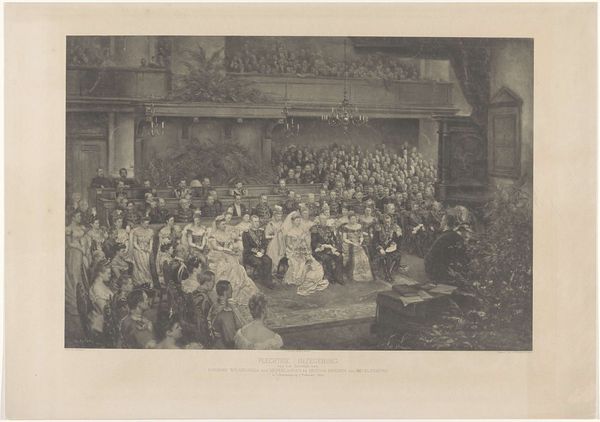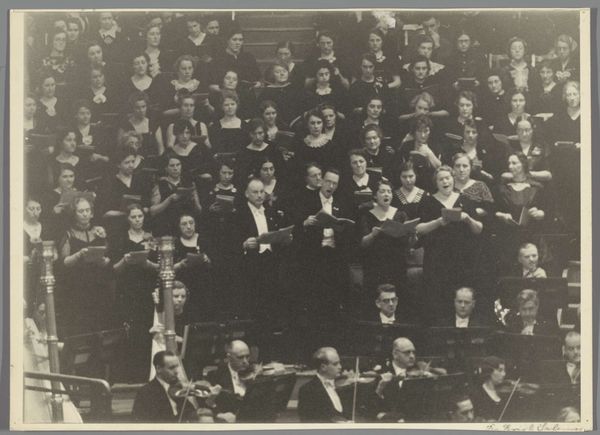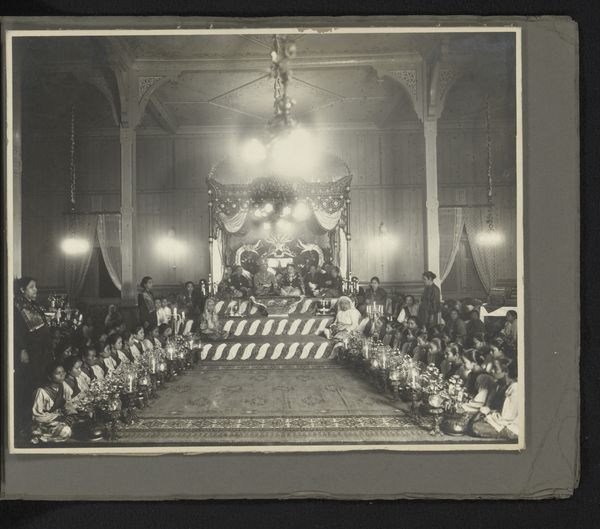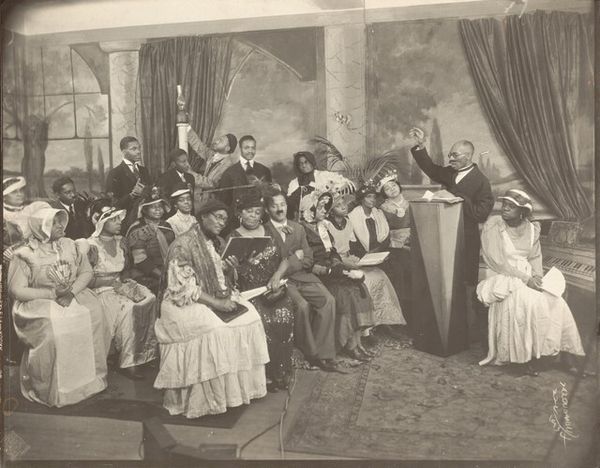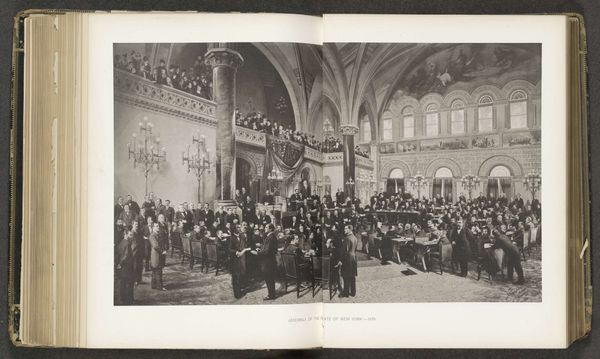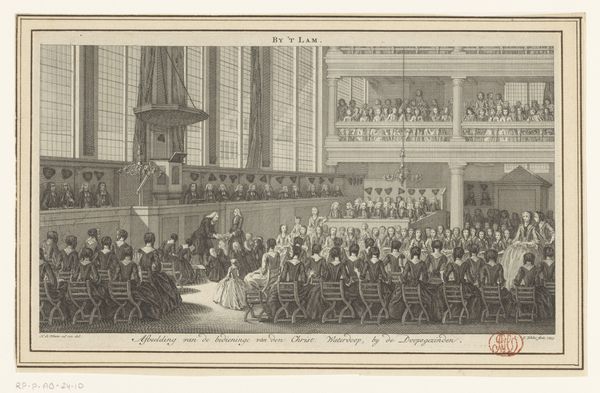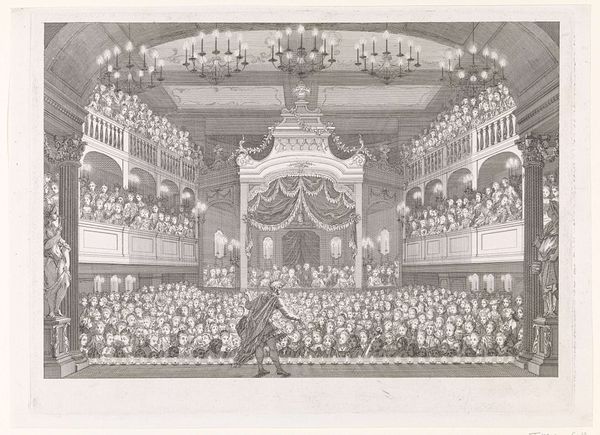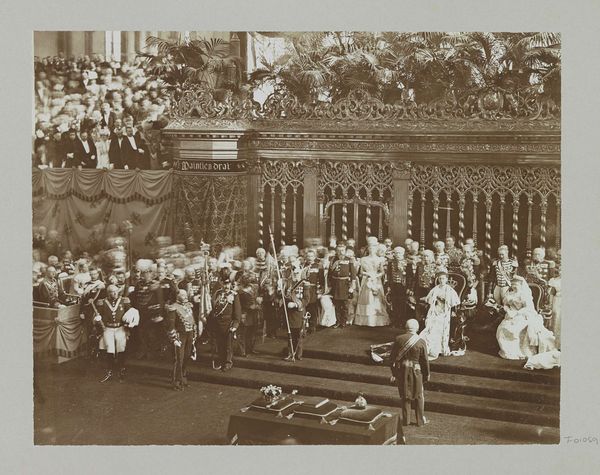
Huwelijk van Juliana, koningin der Nederlanden, en Bernhard van Lippe-Biesterfeld in de Grote Kerk te Den Haag op 7 januari 1937 Possibly 1937
0:00
0:00
franzziegler
Rijksmuseum
print, photography, gelatin-silver-print
#
portrait
#
wedding photograph
# print
#
wedding photography
#
archive photography
#
photography
#
historical photography
#
group-portraits
#
gelatin-silver-print
Dimensions: height 89 mm, width 136 mm
Copyright: Rijks Museum: Open Domain
Curator: Ah, yes. This photograph, a gelatin silver print, captures the wedding of Queen Juliana and Prince Bernhard in 1937. Editor: It's such a formal scene. Looking at the sheer number of people, you really get a sense of the scale and pomp of the event. What stands out to you? Curator: I’m struck by the very materiality of the image itself. Think of the labor involved in creating gelatin silver prints at this time – the industrial processes required to manufacture the film and paper, the darkroom work. These material processes underpinned the circulation of the image. Editor: Circulation of the image? Curator: Absolutely. Consider how this image would have been consumed: printed in newspapers, magazines, perhaps even personal albums. Photography was becoming a crucial tool in shaping public perception of the monarchy, mediating this moment to a vast audience. Each print represents a physical connection to power. And notice the crowd, carefully composed; are we witnessing an actual assembly or a curated one, brought together for spectacle and to signal power through numbers? Editor: That's interesting. The controlled reproduction of the image mirrors the control sought over the monarchy's image, especially with this new photographic technology at the time. Is that accurate? Curator: Precisely. The photograph's function is more than simply documentary. It’s a record of power dynamics, reflecting social and economic conditions. This is a controlled representation. And the value is not just sentimental, it is transactional; for some it’s political, and for others, capital. Editor: So looking beyond the immediate subject of the wedding, we can see a picture of production, consumption, and power at play. Curator: Indeed. By considering the print’s materiality, we start to unpack the complex social relations embedded within. It makes me consider who consumed the images, what their socio-economic background was, and whether it strengthened their engagement with the concept of monarchy. Editor: Thanks. That gives me a lot to think about. Curator: My pleasure, considering art in its physical manifestation always reveals new stories!
Comments
No comments
Be the first to comment and join the conversation on the ultimate creative platform.
